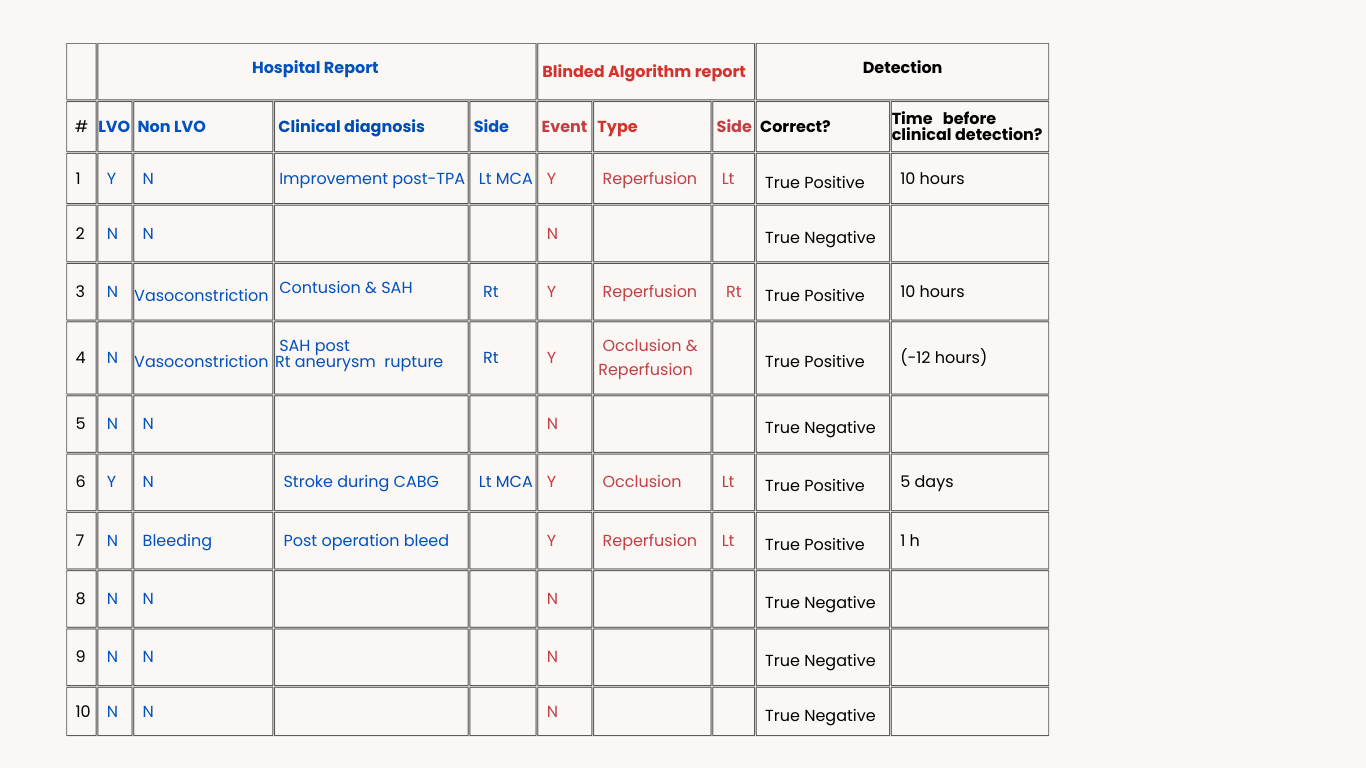Final ID: LBP54
It's About Time: Early and Accurate Stroke Detection in the ICU
We can identify carotid hemodynamic changes to detect LVOs in high-risk patients.
Objectives:
Detect possible LVOs using signals sensitive to hemodynamic changes.
Assess the sensitivity and specificity of LVO detection.
Analyze the impact of patient-specific factors on detection accuracy.
Methods:
This blinded, prospective multicenter study enrolled high-risk stroke patients from Israel (Sheba, Shaare Zedek, Galilee Medical Centers) and Spain (Val de Hebron Hospital). Participants in ICU/stroke units were monitored with the Avertto201 device attached to the neck to assess carotid hemodynamic changes. Patients included had acute ischemic stroke (≤24h), TIA, cardiac surgery/TAVI, or subarachnoid hemorrhage with vasoconstriction risk. Additional risk factors included prior stroke/TIA, hypertension, diabetes, heart disease, or family history of early stroke.
Endpoints:
LVO detection by Avertto vs. clinical diagnoses.
Sensitivity and specificity of Avertto’s detection.
Impact of patient factors (e.g., BMI, comorbidities) on accuracy.
Results:
Eleven participants enrolled; ten recordings were completed. Avertto detected all LVOs (1 occlusion, 1 reperfusion) earlier than clinical diagnoses (10h–5d). One stroke was missed due to a human recording error.
Case #1: Recanalization detected 10h before clinical diagnosis after tPA treatment.
Case #6: Stroke after cardiac surgery detected 1h post-sensor placement; clinical suspicion arose 5d later.
Non-LVO Changes: Subarachnoid hemorrhage and contusion-related abnormalities were also detected.
Patients tolerated the device well. Sedated patients were continuously monitored, and cooperative individuals used the device for 12+ hours. The device functioned under beards without shaving and resumed data collection smoothly after surgical interruptions.
Conclusions:
Carotid monitoring with Avertto201 demonstrates the potential for early detection of LVOs and monitoring cerebrovascular events in high-risk patients. The device identified LVOs 10 hours to 5 days earlier than clinical diagnosis with 100% sensitivity and specificity. It also detected non-LVO cerebrovascular conditions, broadening its potential applications. Recruitment was successful, with 30% of participants experiencing LVOs, validating the high-risk population selection and reducing sample size needs for future trials. Avertto201 performed best with sedated or cooperative patients, and temporary disconnections for surgery did not impair data once reattached.
More abstracts on this topic:
Chen Zhuo, Nasir Khurram, Al-kindi Sadeer, Rajagopalan Sanjay, Ponnana Sai Rahul, Dazard Jean-eudes, Zhang Tong, Dong Weichuan, Okyere Robert, Sirasapalli Santosh, Deo Salil, Khraishah Haitham
Association Between the Amount of Feedback Received and the Adherence to Recommended Self-monitoring and Lifestyle Goals in a Weight Loss Clinical TrialSereika Susan, Bizhanova Zhadyra, Beatrice Britney, Cheng Jessica, Conroy Molly, Kariuki Jacob, Parmanto Bambang, Burke Lora
Readers' Comments
We encourage you to enter the discussion by posting your comments and questions below.
Presenters will be notified of your post so that they can respond as appropriate.
This discussion platform is provided to foster engagement, and simulate conversation and knowledge sharing.
You have to be authorized to post a comment. Please, Login or Signup.

